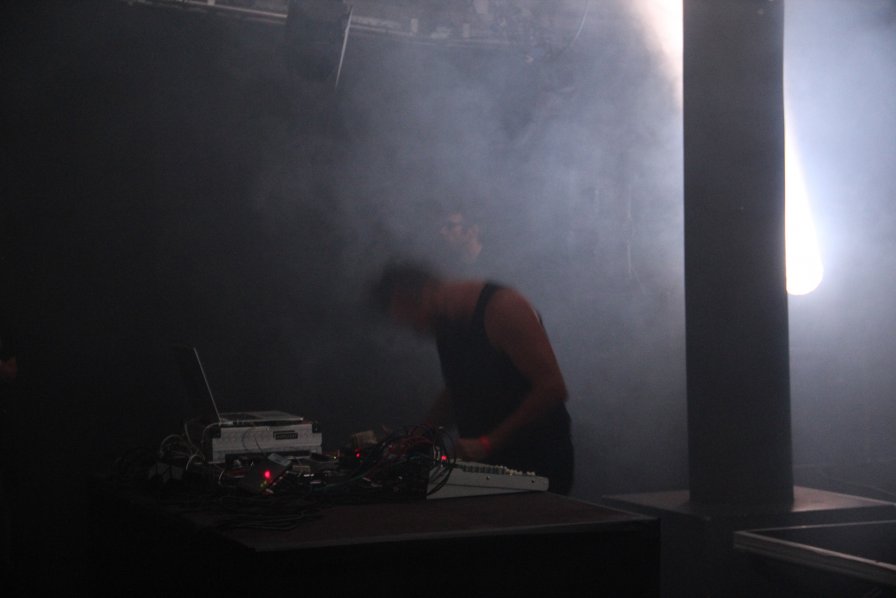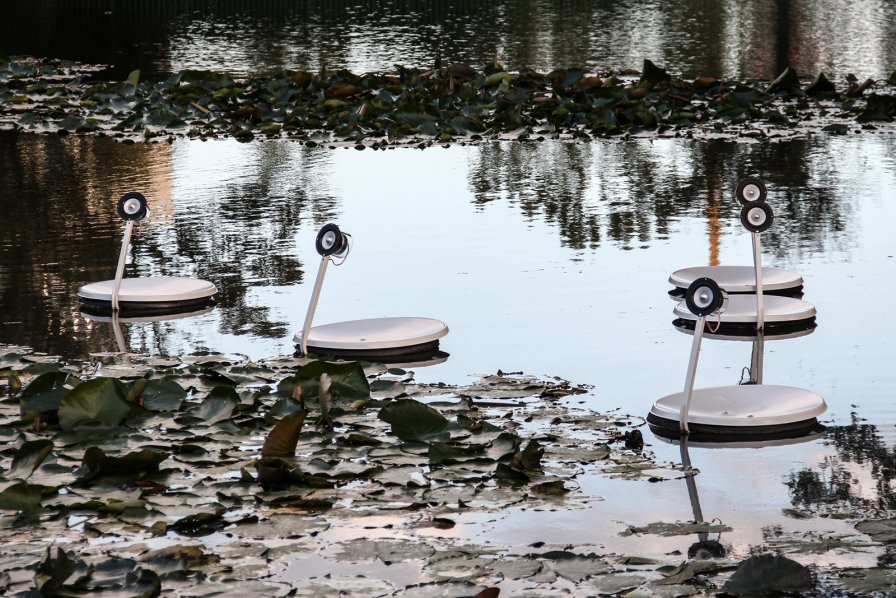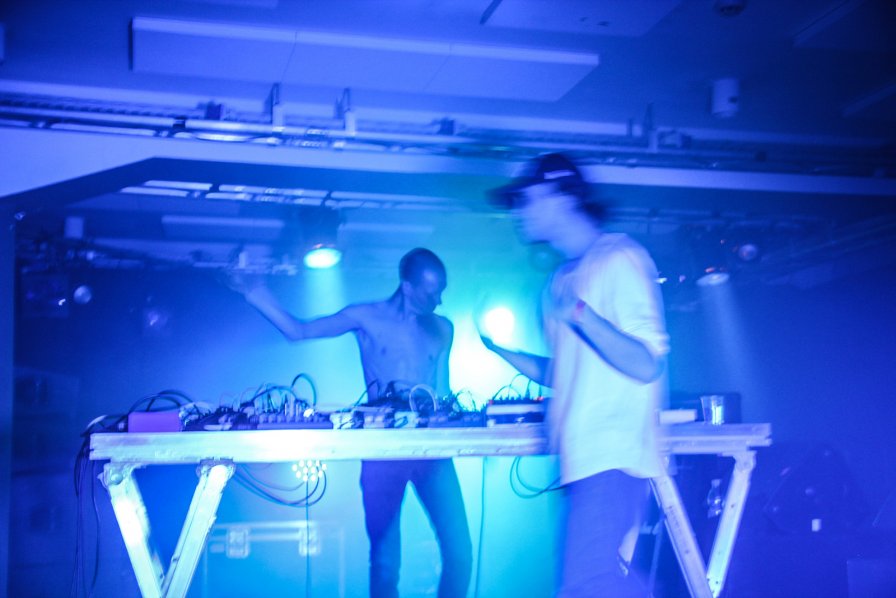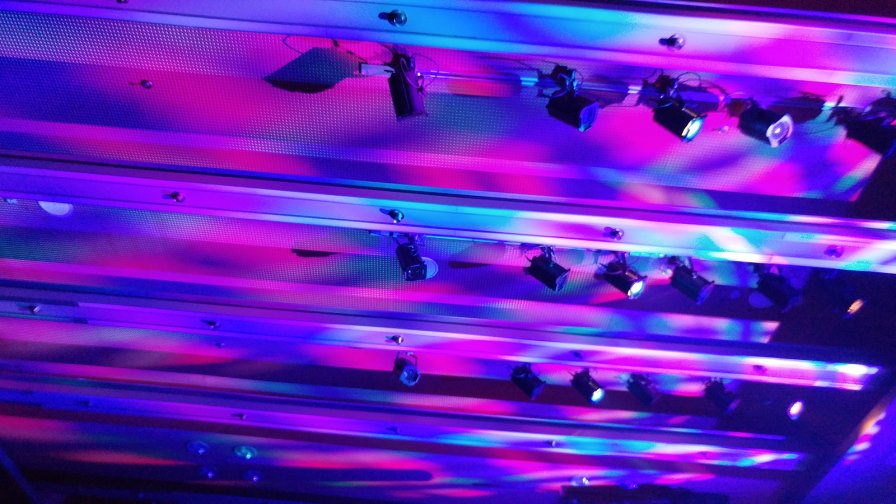Ljubljana, the capital of Slovenia, is a strange place.
Monday: Cankarjev Dom
Empty halls always give off that unintentionally eerie feeling that nobody should belong there. That their purpose is outside the purview of the humans that built them. The more cavernous they are, the more you get this feeling.
Cankarjev Dom, or Cankar Centre/Hall, is an example of this. It is fascinating that this, the largest exhibition hall in Slovenia, would be the opening venue of SONICA Festival. The festival didn’t even use the main spaces of the hall, but rather a smaller stage — Kosovelova dvorana, or Kosovel Hall — located in the lower basement of the building. It only amplified that smallness.
Friday: ROG Factory
After concluding the night’s activities at Cankarjev Dom, I went to an abandoned factory just a little east along the Ljubljanica River for a club night. Upon entry, it felt like I entered a Berlin joint, complete with a blasted-out concrete space for where people could stand, a makeshift bar, and lots of smoking. Alleged Witches, a local house DJ, opened with a two-and-a-half hour set that was of acceptable techno with sparks of ambient. Actress followed with techno, too, though with sprinkles of his established sound. After watching for a legally-mandated 15 minutes, I left, returned here, and wrote these words. Lee Gamble is playing in a bit, but that’s at 3 AM. That’s something I would’ve done 5 years ago, maybe even 3 years ago, but that ain’t me now.
Wednesday: +MSUM

Entering the Museum of Contemporary Art, also known as +MSUM, was a bit disjointed, if only because the doors look like wing tips. Still, walking in, I noticed the crowd gathering around this one gallery space. It’s always good to have that. Just that bit of overfill to show that people are genuinely interested in what you have to offer.
Tomoko Sauvage was the key act of the night. The Japanese artist primarily performed using a piezo-based mic setup, two bowls filled with water, among other stuff. I’ve always had a certain fondness for piezo-based surface recordings, especially because we can’t often hear these vibrations, even if we can feel them. Sauvage resorted to sound manipulation that worked effectively for the materials she was using, creating a unique environment from within the space that makes it more appealing to the listener. You sort of drift into and out of the space without ever moving. That takes a certain level of sophistry in your craft, and I look forward to more of Sauvage’s work.
Even the name is strange. Lyub-li-ahn-a. Those j’s are weird. Majbe thej form a conspiracj (yes, you pronounce it like y). I guess that’s why the locals just use the pronunciation “Loub-li-ahn-a.” Alas.
It is by no means exotic. Many elements of the city I felt a compelling connection to past American and European cities I’ve managed to stumble my way into the last 10 years: Köln, Berlin, Santa Fe, Detroit… Chicago. Its smallness stirs memories of Providence, an emblem of my childhood I have not set foot in for longer.
Saturday: Klub CD
Sometimes, an earnest moment changes everything.
I don’t know where I was, or, rather, where my head was, while at Klub CD, the rooftop restaurant and hall of Cankarjev Dom. Performing in front of me was William Basinski. He’s an odd sort: Despite being this avant-garde figure, he had the look, disposition, and dress of a rock star. He joked about wanting to catch the prior night’s club activity. But perhaps that was the point: His piece, A Shadow in Time, was designed as, in his words, “a funeral mass” and “calling home” to David Bowie, the epitome of cool. Perhaps fitting given it was he who refused the rites of burial and all that remains of him scattered in particles to the winds around Bali.
Thursday: Kino Šiška

The oldest cinema in Ljubljana, the space has been converted into a concert hall on the lower levels. The structure reminds me of multiple cavernous concert halls I’ve descended into throughout my life, though it feels more in shape like an actual music venue than the various rectangular configurations of previous experience.
The act first noted on the bill is a Slovene artist by the name of Lifecutter, who immediately gave off an imposing, spooky vibe appropriate for fall with his dithering samples and incongruent rhythms. That set the mood for the first 15 minutes of the set, building up a dark tension in the room. Had he cut off his set at 20, 25 minutes, it would’ve been a solid performance. But it lasted 45 minutes. The latter half of the set was filled with familiar techno and house patterns, grooves that ultimately did little to inspire the imagination. It roused the crowd into dancing, certainly, but I kept wanting him to go back to what he was doing at the beginning of his set. He did ultimately return there in the closing minutes, but by then, the impact was measurable.
Monday: Cankarjev Dom
The opening act of SONICA 2018 was Tristan Perich, of renowned One-Bit Symphony fame. Utilizing a single synth, he did a buildup of multiple looping patterns that in theory should allow the listener to drift in and out. But it felt similar after a while, as if he were running through the motions of what a synth set should sound like. There was hope that it would build up to something, but it didn’t go where I would’ve expected.
Thursday: Moderna Gallerija
Below are notes taken verbatim from an occurrence on Thursday at Moderna Gallerija, the Museum of Modern Art, near Tivoli Park. No context given. Use your imagination.
- #3: Hunch!
- #2: Hey, someone I can relate to
- #4: Speaks better than #1
- #5: Has a pulse to the ground
- #1: Unsure about what they’re saying
- #6: Ljubljana needs less techno
- #8: Jazz is bad jazz is bad
- #7: A key to… all over the place?
- #9: Those are certainly four words
Friday: Cankarjev Dom
The headline act was a new piece called Sacred Horror in Design by Iranian musician Sote with German visual artist Tarik Barri and a couple of Iranian partners. The structure of this long, winding set piece at first harkens to the emotional minimalism of Jerusalem in My Heart. But it’s not that simple, really. There is a pain, a sadness that circulates and shifts throughout the piece, whether in the background imagery or when the traditional Iranian instrumentation is distorted through various effects. It’s something that you can feel there. Even the moments where fear is meant to be invoked, it comes through as anguish.
The tapestry brought about by Barri’s visuals served as an assertive complement to Sote’s composition. Whether through simple tears or bleeds that cut through the imagery or invocations of Persian-Islamic culture, the melancholy that is powering this piece shows.
Saturday: Mestni park Tivoli

While wandering through Tivoli Park looking for ducks, I accidentally stumbled upon Marco Barotti’s sound installation, Swans, overlooking the pond. I stood there for a few moments, trying to make sense of the tiny spectacle, but it felt strangely monotonous. I moved on to find a small number of ducks in the pond and an old man struggling to feed them (only to be thwarted by pigeons).
Wednesday: +MSUM
Following Sauvage was a DJ set by James Ginzburg. For the most part, the crowd just ignored him and either stood around, ate at the little cantina next to the gallery, or smoked outside. Perhaps it was for the best: the set felt like second-hand James Ferraro or OPN with a side of Deafheaven.
Instead, its strangeness comes from a calmness about it that accepts its minor absurdities. The prevalence of graffiti everywhere with little more than a shrug. A goofy meme referencing a short film when a new train opens to Italy. An anecdote of a taxi driver nonchalantly taking a tourist around the city as riots were occurring.
This isn’t bad, mind you. It grants the opportunity to question things.
Friday: Pritlicje
In which a thing may have happened (among others).
Thursday: Kino Šiška

To close the night, Giant Swan took to the stage… and then one of them immediately jumped off it. Taking an aggressive stance with the crowd, a drum & bass set soon followed. The setup they had was definitely one you would find among anyone who came from Brighton or Bristol. The energy they injected into their set certainly merited a comparison to Fuck Buttons, and unlike my previous experience with a live set of the latter, the crowd actually got into it. Much credit to that, a rarity in such settings.
I just wish I could feel the same about the music. While I was hoping for the bombastic energy and tension-building that I’ve seen many a good Brighton and Bristol act pull off, what I got was the other type of music I hear from those cites: Meandering repetitions that never quite get out of their groove. I failed to understand their appeal, but at least the crowd was happy about it. Make of that what you will.
Saturday: Klub CD
The work was eerily reminiscent of the works of both The Caretaker or (especially) Tape Loop Orchestra. The first act, which Basinski claimed was comparable to a New Orleans-style funeral march, brought about a different angle. It wasn’t really a body going home. It was the body, the self going home, turning inward in ways that one couldn’t anticipate. Perhaps that is what looking at things in retrospect does to you. Understanding the purpose, the meaning of things that have come before. Many laid down to understand what was happening to them. Others, like myself, observed both outward and inward what was happening. A forgotten sadness encroaches.

Monday: Cankarjev Dom
The second act was Yair Elazar Glotman and Mats Erlandsson, who played a selection from last year’s joint effort, Negative Chambers. Joining them were local musicians Katarina Kozjek, Anastazija Krenn, and Žiga Murko. Now this was something. While Perich attempted to demonstrate something resembling intensity, Glotman and Erlandsson, et al. were intensity. The pull into the ethereal immediately brought to mind the works of Motion Sickness From Time Travel and the like, as well as the modest drawing that creates a sensation of envelopment yet isn’t overwhelming. You’re in a strange setting in these situations because of it. And yet… it felt right. It was something that could set the tone for the festival.
Friday: Cankarjev Dom

“The situation remains excellent.”
Container Doxa would conclude the night at Linhart Hall. Of the Slovene acts that played throughout the festival, they were the most interesting. They opened the piece with an empty stage, while the members stood in the crowd, imitating birdsong. One by one, the group assembled and delivered a performance as fragmented as their arrival. The bouncing of instrumentation played off of each other very effectively, while an arresting visual display stood at their backs, with Pia Podgornik reading through a mechanical treatise that played off like a sinister lecture.
As some would remark, there are limits to futurism. Container Doxa’s piece hinted at these limitations in terms of the piece. It showed how it’s so hard to walk the line between the pristine cosmopolitanism of futurology and dystopia… and how we lean hard toward the latter than the former these days.
The 10th running of SONICA Festival in Ljubljana, operated by the Museum of Transitory Art, focuses on the matter of “sensitivity,” and whether it is necessary to oblige to it anymore. The context of our times certainly gives us reason to ask this question. Of course, many here would be uncomfortable to even consider it. SONICA graciously invited Tiny Mix Tapes to attend and to become part of their talks. In turn, I, on my own 10th anniversary of writing for TMT, have been sent to cover… and to talk. I will avoid the trappings of nostalgia tripping as much as I can, though I probably already screwed up in making note of prior cities. Oh well. Not the worst thing that can happen in a festival review.
Tuesday: Ni v Sloveniji/non in Slovenia

É engraçado. Falou esloveno mais bem de italiano. Porque é…?
Meh. Culpo Portugal.
Thursday: Kino Šiška

The headliner of the night was Aïsha Devi. It is worth noting her purpose here at this point: She is representative of the potential not of electronic music (that in and of itself is a different matter), but of SHAPE, the European Union’s attempt at creating a centralized platform for artist development throughout its member states (disclosure: TMT is a SHAPE media partner). While many of the acts this week are connected to SHAPE in some capacity, either as active members or alumni, Devi represents one of its bigger success stories, making a significant impact on the electronic music scene. So it makes some sense to have her around, especially with a new album to tout.
Her set at Kino Šiška was a dichotomy of sorts. On the one hand, her music remained the same: A miasmic hodgepodge of dissonance with some foundations of brilliance that screamed missed opportunity. On the other hand, her performance actually worked to her favor, with her jumpy mannerisms and distorted movements working up the crowd.
Friday: Cankarjev Dom
The return to Cankarjev Dom would also come with an upgrade. In lieu of Monday’s visit to Kosovel Hall, SONICA booked Linhartova dvorana/Linhart Hall, a vast concert stage that was almost certainly double in capacity. It felt like a true concert hall in scope, compared to Kosovel’s lecture-like space.
To open the night, Canadian artists Jason Sharpe and Adam Basanta took to the stage in an intense barrage of sound. The post-rock narrative worked to their advantage in this situation, built on call and response between Sharpe’s instrumentation and Basanta’s looping. It’s worth noting the prior descriptions of the concert hall fit well here. Acoustics in a venue tend not to matter as much in electricified music, since the sound is already partially shaped and adjustable. However, in acts such as Sharpe’s and Basanta’s, where a greater emphasis is placed on sound design and manipulation, the acoustics start to matter a lot more. Which is to say that Linhart Hall played as much a role in turning the duo’s sound into its own thing as the effects on display.
Saturday: Klub CD
As the music shifted to act #2, which was intended as a transmission to the spirit of Ziggy Stardust, of Starman, of the Thin White Duke, and of all his other iterations, the mood changed. There was little chatter in the crowd. People were just drifting. And in that moment, everything felt strangely earnest. There was an inexplicable sincerity projected by Basinski’s music, even as he remained decked out in glam rock attire. It made me think about not just what I was doing in Ljubljana, but also what I have been doing generally.
Sometimes you get the clarity you look for in unexpected places. As the loops weaved through and about, I felt an urge to question my actions and roles as a Writer of MusicTM and supporter of the Chicago DIY scene, as well as a passive supporter of DIY scenes everywhere else. Have I done enough? Have I put in enough effort to truly help communities move forward? Has my own hesitance at being a social person, and the insufferability that has permeated much of the social internet, created an unnecessary crutch to prevent me from doing more and actually be a helpful person?
These are weird questions to ask in the middle of an ambient performance. But perhaps this was the only time I could really think about anything beyond the scope of this report, really. And perhaps it was necessary.
The priorities had changed.
More about: Actress, Adam Basanta, Aïsha Devi, Alleged Witches, Container Doxa, Giant Swan, James Ginzburg, Jason Sharpe, Lee Gamble, Lifecutter, Marco Barotti, Mats Erlandsson, Sote, Tarik Barri, Tomoko Sauvage, Tristan Perich, William Basinski, Yair Elazar Glotman



